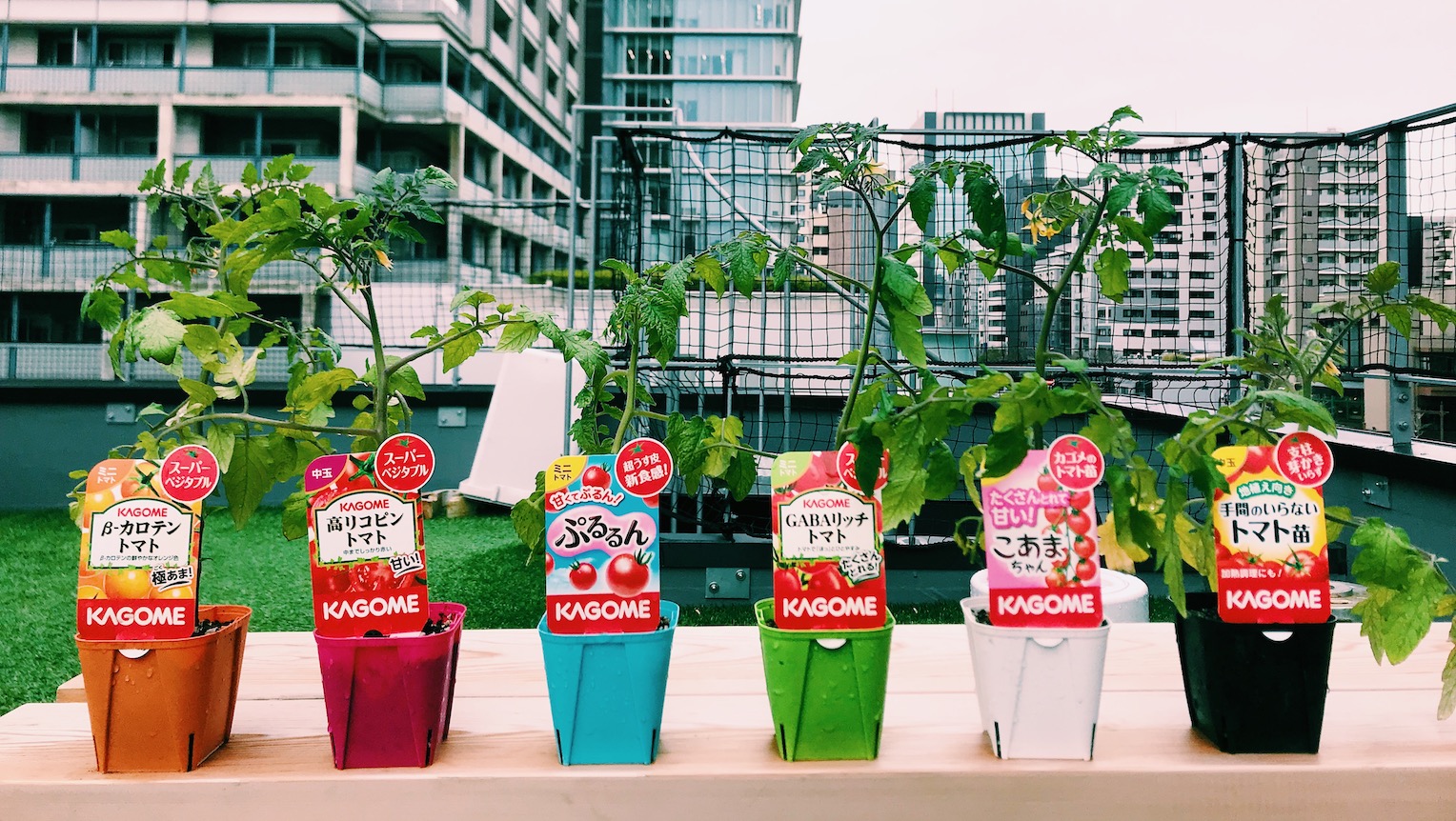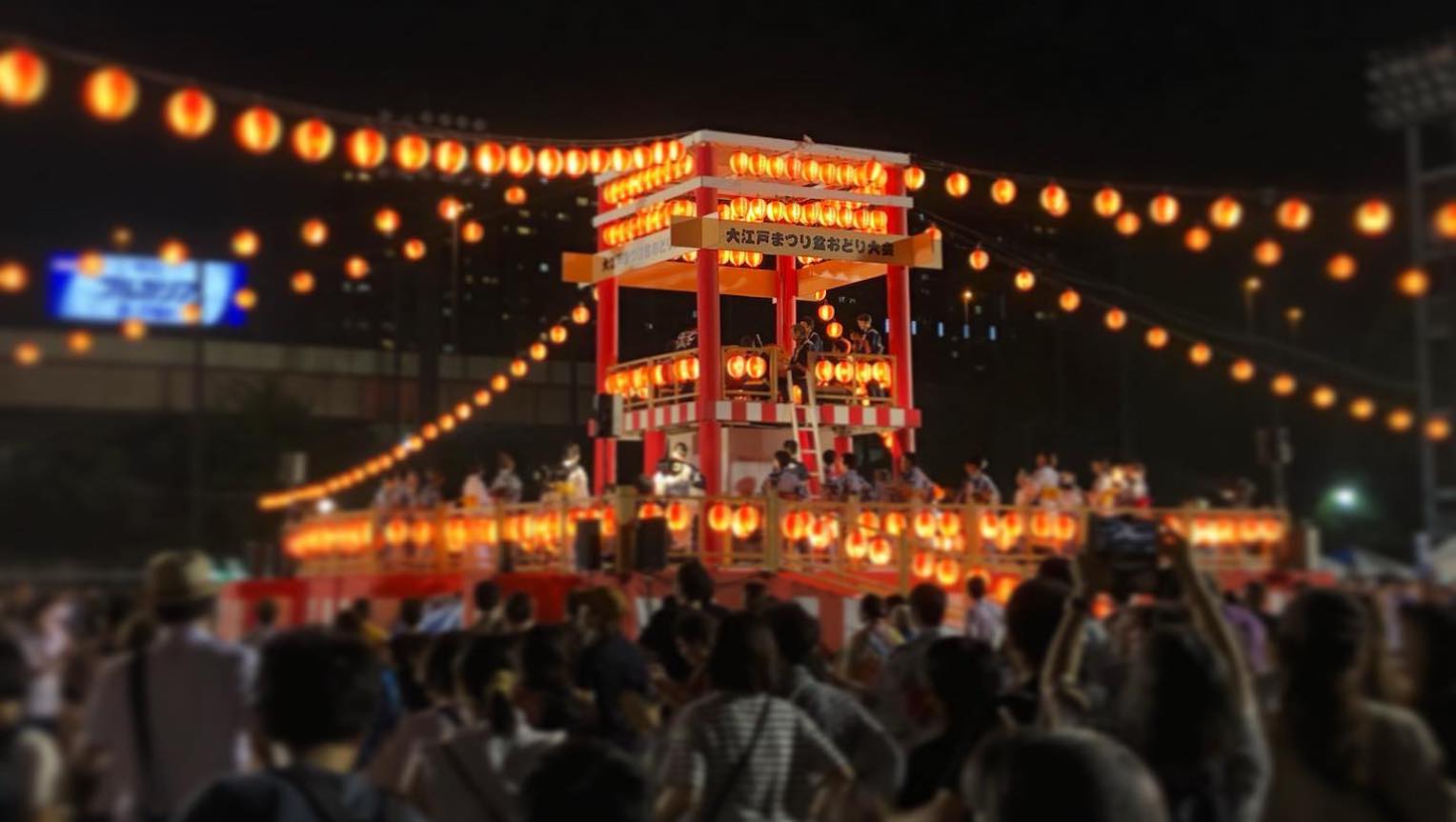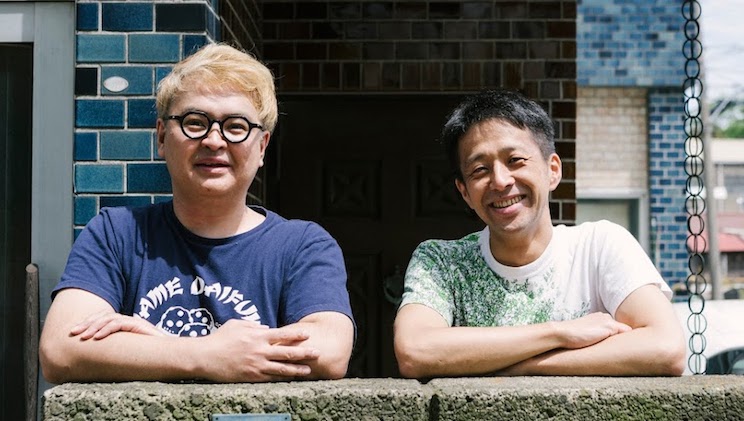Communities of the Future, Shared from “HAMA HOUSE” Urban Living.
Communities of the Future, Shared from “HAMA HOUSE” Urban Living.

The company good mornings has worked on numerous urban community creation projects, generating human interaction and reconstructing the appeal of cities. Their activities are based in Hamacho, Nihonbashi, at “HAMA HOUSE.” It has been about three years since they first became involved with Hamacho. How has the city changed, and how will they produce further development in the future? We spoke with good mornings company representative Mr. Yu Mizushiro about urban development and community, and also got a fair number of helpful hints about their future.
good mornings is an “Editor” that makes revisions to the city.
-At good mornings, we’re involved in a very wide range of projects, from operating cafes to regional revitalization efforts and media creation.
Put simply, our job at good mornings is “place creation.” We consider it our role to revise a location like a magazine editor, and create places that improve the city. People often say that we handle a wide variety of projects, but they’re all part of our place creation. So, for example, we’ll make websites or free newsletters if we need to, in order to express the fun side of a city. We ultimately use these as tools to connect with people involved in the city, so people see it as us covering a variety of sectors.
-What do you do when editing for place creation, specifically?
To put it another way, editing a place is about polishing its “ability to connect.”
Good editors are skilled at keeping a thumb on the pulse of the world, and combining distinct things to create new angles on ideas, wouldn’t you say? They also know things like how “saying that would destroy a designer’s motivation,” or to “adjust this, because the promotion’s angle and author’s intent don’t match.” They lead everyone, while blazing a trail and connecting the parties involved.
We meet and talk with people and often visit places while they work to connect these disparate elements every day. And because of that, when you get down to the fine points, you might almost think we live a carefree life… (laughter)
-Not at all. It’s good to look like you’re having a good time (laughter). As a role, it seems to require very precise communication.
Whatever sort of project we work on, we need more quantity than quality in connection, initially. So we talk to as many people as possible, convey information, and discuss ideas.
That’s also how we work here in Hamacho. This is a city of diverse people, with a wide range of affiliations and local businesses, and community councils and youth groups. At first, it seemed like they were mostly disconnected and spread out, but we met with people in each position, and came to form connections. People involved with the city also have disparate images of Hamacho. Young families that have just moved here see its charms in the quality educational system and abundant natural scenery, while businesspeople like the ease of regional access. Everyone likes different things about this city.
So we’re always thinking about how to create relationships between the diverse people and charms here.

The good mornings headquarters at HAMA HOUSE. It has many faces, with a reading café, event space, offices, and more
-Did the charm of that diversity play a role in your decision to base yourselves in Hamacho?
Yes, somewhat. We have worked in Hamacho before building HAMA HOUSE here, and the city really has a lot of interesting aspects. In another sense, we selected this location out of sympathy with the attitude and philosophy at Yasuda Real Estate, a developer in the area. Urban development and place creation are both long conversations, so we wanted to work with someone whose stance resonated with us on things beyond property quality. We like their Hamacho concept, of “a city with visible connections to handmade work.”
Communities evolve greatly with “deliveries.”
-I think community is a vital keyword in city revitalization. But to begin with, how do you define community, Mr. Mizushiro?
I think community is found in ties to family and friends. Think of family and friends as the center of a flower, and the rest as petals. Closer people are “tied in” rather than “outside,” and having more people in a community gives vibrancy to our lives, I think.
-So, what would you consider to be a good community?
A good community has two conditions. First, it does not have vertical junior-senior relationships, and second entry and departure are free. We looked into all sorts of communities, from local youth groups to allies with cultural affiliations, but this was true of all of them.
It’s easy to envision if you imagine a bar. There will be regulars, as well as new customers that had to work up the courage to come in, and a pleasant, reassuring bartender, right? And they show up when they feel like it, to see who will be there that day. That nice kind of bar is usually a case of a bartender skillfully connecting patrons, but the critical skill for a community is serving as a hub for a horizontal, free environment.
-Having the right level of casual is important. In contrast, the communities you’re involved with often seem to produce a lot of output for being so casual, Mr. Mizushiro.
I think that “delivering” something together provides a spark to revitalize a community. Delivering something together with a group of people with distinct backgrounds dramatically changes human relationships, and the community evolves.
For example, the company Kagome is famous for vegetable juice, and is headquartered in Hamacho. But a surprising number of local Hamacho residents didn’t realize that the building they saw everyday was Kagome’s. Meanwhile, Kagome wanted to be more open to the local community as a company, so we thought it would be intriguing to connect them more with the area. So we involved a wide range of people to “deliver” a series of a lot of events, from a salad bar with Kagome tomatoes at HAMA HOUSE, to tomato planting sessions on the HAMA HOUSE roof, and so on. Mothers in the area were particularly positive about our events, coming to support and feel closer to a company they hadn’t been familiar with before. Inversely, these mothers also spoke out, and the interaction has deepened, for example with the approval of tomato juice as a drink as school events.

Potted tomato varieties planted at planting sessions. The seedling pots were also designed in collaboration with Hamacho-based interior furnishing store “KEYUCA” photo:good mornings
-All else aside, giving something form advances the community, then.
I think that if we all progress with community and delivery activities, this city will develop into something fascinating. And even a delivery doesn’t have to be a product we make; and form is fine, like events where people have vendor stalls at parades. A delivery creates a minor industry. A city with lots of projects popping up all over is a lively, charming place.
-Do community members make everything by hand when you actually resolve to create something?
It varies by case. We request professional creators handle things that require designs in some cases. I’ve also felt that it would be nice for the creator to serve as a community and delivery hub in those cases, so we’ve made small offices for creators on the third floor of HAMA HOUSE.
The diversity of HAMA HOUSE approaches to events, involving creators.
-I see. So your setting lets you get immediate cooperation from creators when you want to do something.
It does. Actually having creators with offices here has produced cases where they made logos and facility names for local groups. I think that creators will be drawn here if people recognize Hamacho as that sort of city, with intriguing local projects. That’s why we’re trying to connect them with the community, deliberately.
-What role do creators fill in a community?
We want to “emotionally move people” through the communities we create, but creators are also similar on that point, and are always thinking about emotionally moving people through their designs and communication. So we don’t just request things because we want them to make something stylish; we hope they can take a role in capturing hearts with creativity.

-You hold a lot of events that seem like they would stimulate creator sensitivity at HAMA HOUSE, don’t you?
Since our role is to connect and invigorate people with varying affiliations, we work to make our events here attract interest from diverse people.
For example, we held a launch event for Nike founder Phil Knight’s autobiography Shoe Dog. That sort of thing can be quite fascinating for creators. We filled all of the bookshelves on the HAMA HOUSE walls with the book and renamed it the “Shoe Dog Café” for the time, and held a variety of related events around our launch event. We had a gathering of young entrepreneur fans of the book with competitive talks, invited people to presentations by Nike creative staff, and even involved a women’s university support team in public talk events. Also, inspired by Phil Knight’s ability to keep fighting even when faced with challenges, as the protagonist, we collaborated with manufacturers in Kumamoto and the Sanriku Coast area in the context of them being “people who don’t give in even in the face of disaster.”
When we did that, despite their varying backgrounds, the people who came got along well thanks to the shared theme of the book and the events it inspired.

good mornings held a wide range of events themed on the book "Shoe Dog" photo:good mornings
-Having an approach with such diverse appeal definitely would attract all kinds of people. Where do you get the idea for that kind of plan?
People misunderstand, and think we have a wealth of plans and ideas since we hold all sorts of events… But actually, I’m not that good at coming up with that sort of thing. But I think it’s true that when I try to do something, I have more skill in “focusing” on it than most people. I can usually predict whether a local council will cooperate with a plan, or whether fire and insurance permits will work out but a police permit won’t, and similar things based on past experience. Then there’s who you should persuade to make things go well, and where you have to get the order right when presenting things to people (laughter). These sorts of things are always important when you do anything in the city. I think that’s also included as part of our job.
-What do you emphasize when holding events?
That the people who plan it have the most fun. For example, even if a plan goes off-course, I think that it’s good in its own way so long as the person and those they value have a good time. We might face losses from the failure, but rather than viewing that as damage, we think of it as gaining experience. And I think that good communities and cities come from that accumulation of experience.
We don’t need productivity or efficiency. The value of community activities.
-You actively work to connect people in the city, but it takes time for those efforts to produce readily-visible results. How do you show large numbers of people the value of urban development projects, when the short-term, concrete results are so hard to see?
It’s true that results usually appear over time and repeated efforts in many urban development projects. Community creation is definitely that way, too, but I think people can sense its value by actually participating and experiencing it.
Generally, we all handle vital, urgent matters, don’t you think? But vital matters that aren’t urgent are harder to get around to. That’s precisely how urban development and community creation are; they might not be urgent, but they’re critical efforts for enriching our lives. They’re also like weightlifting, where you have to do it every day, and can’t quit partway.
-So community creation is close to weightlifting (laughter). The lower urgency and restriction on community makes it work differently than a corporate organization, doesn’t it?
Communities have their own unique rules. For example, businesses often demand productivity and efficiency, but communities usually don’t favor them, and no one will praise you for pursuing them.
We have a flavored shaved ice stall at the annual festival here, but would there be any point to adjusting our procedure for efficiency in making it? We’ve even laughed about it (laughter). Say we were so efficient we sold out 15 minutes early. The world runs on logic where that just leaves us empty time until the fireworks at the end. You get a close view of the different values at play in the world, like when business and community norms are at odds.

The Chuo City, Oedo Festival Bon-odori dance festival, a Hamacho summer tradition photo:good mornings
-In contrast, if you consider if from the standpoint of people who will participate in the community in the future, it takes a bit of courage to jump into a community outside of home or the office. What should people do if they’re interested, but just can’t make the jump?
The important thing is to take even a small step, since you can’t make more friends without acting. People are less concerned with what you do than you think they are, so you don’t need to worry that much. Also, there are a lot of shared languages that only people in communities really understand, and there’s nothing like the feeling of true understanding between allies in a fight. People who take action sometimes face external criticism, but you can ignore it because it’s just a voice from the spectator’s gallery. When you’re taken action as a player and not a spectator, you gain new value you couldn’t at home or work. So people who become community players live enjoyable lives.
In the future, we want to create more “communities that can ____”
-You’ve been involved with Hamacho for about three years now. Do you feel like anything has changed?
Naturally, new connections form over the course of the sort of events I’ve explained so far, but I also feel that the types of activities the communities undertake are gradually changing.
For example, I really felt it recently at the “Hamacho Marche,” which is held four times a year. The Marche attracts all kinds of gourmet ingredients, and the basic stance is that “selling out is not okay” in consideration of the customers. But in contrast, it’s never a problem when stores have leftover inventory due to weather issues. I was talking with someone about that as odd, and got a local company’s general affairs division to help out in buying up the lost inventory for break and conference room use. That led a lot of people to join in as hobbyists, and now we’re running a multi-faceted “Lucky Meal Project” that involved other organizations and companies.
I think that if connecting disparate people is the vertical axis of community creation, connecting people in the same fields of work or hobbies is the horizontal axis. But in placing “food loss” as our central theme, we found that we created a sort of “diagonal axis” that was distinct from either. Even rival restaurants had a sense of unity over the shared point of using lost food inventory, and it formed a new kind of community at the same time, when other types of people got involved.

Leftover foods from the Hamacho Marche resold inside a company photo:good mornings

Example of a meal provided as a “Lucky Meal” reusing ingredients at a local restaurant photo:good mornings
-That’s a very forward-thinking change. What kind of community will be ideal in the future, in your opinion?
I think “communities that can ___” will be suited to the coming era. The lucky meal project is also a part of this, but it’s easy for participants to find value in communities that can resolve an issue together. If that progresses, the community grows in scale and increases in market value. For example, when a healthcare company surveys people, it’s much more efficient and they get more realistic feedback when surveying a community of thousands with an interest in health, compared to sampling tens of thousands of people. Communities with the same awareness of issues can make all sorts of contributions to the world.
-Finally, what kind of place do you want HAMA HOUSE to become in the future?
I think the role for HAMA HOUSE is to remain a living place for diverse people to interact, and want to create as many chances as possible for people to connect. The more chances and types of chances, the more people will think that “I might be able to join in for this, too.” I think that increases the diversity of participants even further, and leads to output that the organizing side won’t anticipate. Then, I want the city to gradually grow to where it spontaneously produces communities, even without us providing connections.
Text: Minako Ushida (Konel), Photo: Daisuke Okamura
good mornings
With a vision of improving society and people through the creation of “places,” good mornings is a planner/operator company that handles everything from community-based café and restaurant operations to planning and production of media.
In 2017, the company opened HAMA HOUSE in Hamacho, Nihonbashi, as an office and place for urban development.




